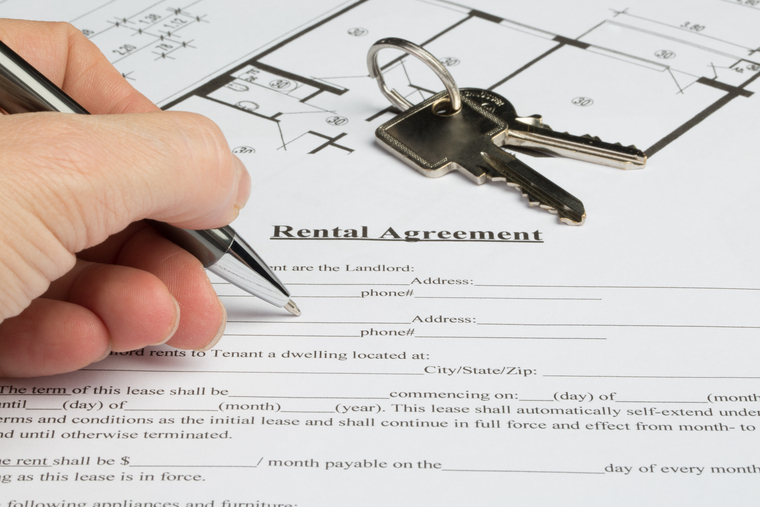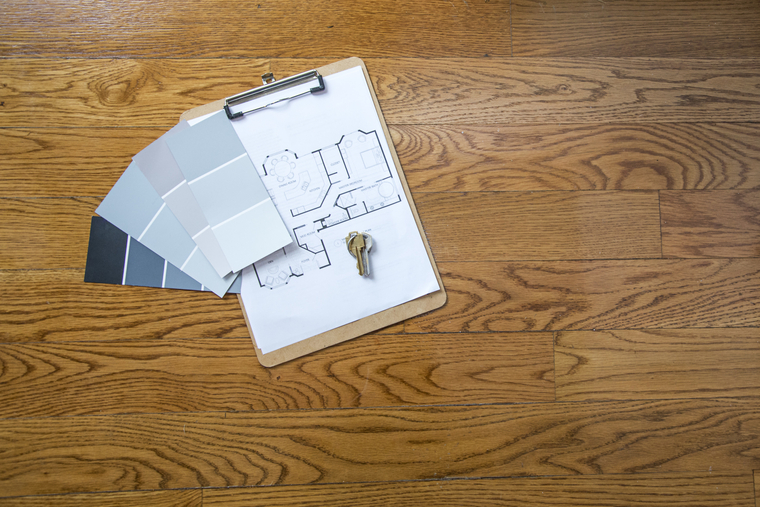Social Links Widget
Click here to edit the Social Media Links settings. This text will not be visible on the front end.
Real Estate Appraisals 101


Appraised value vs. market value
Appraisals are designed to protect buyers, sellers, and lending institutions. They provide a reliable, independent valuation of a tract of land and the structure on it, whether it’s a house or a skyscraper. Below, you will find information about the appraisal process, what goes into them, their benefits and some tips on how to help make an appraisal go smoothly and efficiently.
The appraised value of a property is what the bank thinks it’s worth, and that amount is determined by a professional, third-party appraiser. The appraiser’s valuation is based on a combination of comparative market sales and inspection of the property.
Market value, on the other hand, is what a buyer is willing to pay for a home or what homes of comparable value are selling for. A home’s appraised value and its market value are typically not the same. In fact, sometimes the appraised value is very different. An appraisal provides you with an invaluable reality check.
If you are in the process of setting the price of your home, you can gain some peace-of-mind by consulting an independent appraiser. Show him comparative values for your neighborhood, relevant documents, and give him a tour of your home, just as you would show it to a prospective buyer.
What information goes into an appraisal?
Professional appraisers consult a range of information sources, including multiple listing services, county tax assessor records, county courthouse records, and appraisal data records, in addition to talking to local real estate professionals.
They also conduct an inspection. Typically an appraiser’s inspection focuses on:
- The condition of the property and home, inside and out
- The home’s layout and features
- Home updates
- Overall quality of construction
- Estimate of the home’s square footage (the gross living area “GLA”; garages and unfinished basements are estimated separately)
- Permanent fixtures (for example, in-ground pools, as opposed to above-ground pools)
After considering all such information, the appraiser arrives at three different dollar amounts – one for the value of the land, one for the value of the structure, and one for their combined value. In many cases, the land will be worth more than the structure.
One thing to bear in mind is that an appraisal is not a substitute for a home inspection. An appraiser does a cursory assessment of a house and property. For a more detailed inspection, consult with a home inspector and/or a specialist in the area of concern.
Who pays and how long does it take?
The buyer usually pays for the appraisal unless they have negotiated otherwise. Depending on the lender, the appraisal may be paid in advance or incorporated into the application fee; some are due on delivery and some are billed at closing. Typical costs range from $275-$600, but this can vary from region to region.
An inspection usually takes anywhere from 15 minutes to several hours, depending on the size and complexity of your property. In addition, the appraiser spends time pulling up county records for values of the houses around you. A full report comes to your loan officer, a real estate agent or lender within about a week.
If you are the seller, you won’t get a copy of an appraisal ordered by a buyer. Under the Equal Credit Opportunity Act, however, the buyer has the right to get a copy of the appraisal, but they must request it. Typically the requested appraisal is provided at closing.
What if the appraisal is too low?
If you appraisal comes in too low it can be a problem. Usually the seller’s and the buyer’s real estate agents respond by looking for recent and pending sales of comparable homes. Sometimes this can influence the appraisal. If the final appraisal is well below what you have agreed to pay, you can renegotiate the contract or cancel it.
Where do you find a qualified appraiser?
Your bank or lending institution will find and hire an appraiser; Federal regulatory guidelines do not allow borrowers to order and provide an appraisal to a bank for lending purposes. If you want an appraisal for your own personal reasons, and not to secure a mortgage or buy a homeowner’s insurance policy, you can do the hiring yourself. You can contact your lending institution and they can recommend qualified appraisers and you can choose one yourself or you can call your local Windermere Real Estate agent and they can make a recommendation for you. Once you have the name of some appraisers you can verify their status on the Federal Appraisal Subcommittee website: https://www.asc.gov/National-Registry/NationalRegistry.aspx
Tips for hassle-free appraisals:
- What can you do to make the appraisal process as smooth and efficient as possible? Make sure you provide your appraiser with the information he or she needs to get the job done. Get out your important documents and start checking off a list that includes the following:
- A brief explanation of why you’re getting an appraisal
- The date you’d like your appraisal to be completed
- A copy of your deed, survey, purchase agreement, or other papers that pertain to the property
- If you have a mortgage, your lender, the year you got your mortgage, the amount, the type of mortgage (FHA, VA, etc.), your interest rate, and any additional financing you have
- A copy of your current real estate tax bill, statement of special assessments, balance owing and on what (for example, sewer, water)
- Tell your appraiser if your property is listed for sale and if so, your asking price and listing agency
- Any personal property that is included
- If you’re selling an income-producing property, a breakdown of income and expenses for the last year or two and a copy of leases
- A copy of the original house plans and specifications
- A list of recent improvements and their costs
- Any other information you feel may be relevant
By doing your homework, compiling the information your appraiser needs, and providing it at the beginning of the process, you can minimize unnecessary phone calls and delays.
For more information on Windermere Evergreen please contact us here.
Six Key Factors That Affect the Sales Price of Your Home


Pricing a home for sale is not nearly as simple as most people think. You can’t base the price on what the house down the street sold for. You can’t depend on tax assessments. Even automatic valuation methods (AVMs), while useful for a rough estimate of value, are unreliable for purposes of pricing a home for sale.
AVMs, like those used by Zillow and Eppraisal, have been used for many years by banks for appraisal purposes. They are derived from algorithms based on past sales. But producers of AVMs agree that they are not accurate indicators of home value. For example, Zillow.com states, “Our data sources may be incomplete or incorrect; also, we have not physically inspected a specific home. Remember, the Zestimate is a starting point and does not consider all the market intricacies that can determine the actual price a house will sell for. It is not an appraisal.”
So what does Zillow recommend sellers do instead? The same thing the real estate industry has been advising for decades: Ask a real estate agent who knows your neighborhood to provide you with a comparative market analysis. To accomplish that, I typically consider the following factors—plus others, depending on the house:
Location
The location of your home will have the biggest impact on how much it can sell for. Identical homes located just blocks apart can fetch significantly different prices based on location-specific conditions unique to each, including: traffic, freeway-access, noise, crime, sun exposure, views, parking, neighboring homes, vacant lots, foreclosures, the number of surrounding rentals, access to quality schools, parks, shops, restaurants and more.
Recommendation: Be willing to price your house for less if it’s located in a less desirable area or near a neighborhood nuisance.
Market
Another major factor that also can’t be controlled is your local housing market (which could be quite different from the national, state or city housing markets). If there are few other homes on the market in your local area (a situation known as a “sellers market”), you may be able to set a higher price. However, if there’s a surplus of homes like yours for sale (a “buyer’s market”), your pricing will also reflect that.
Recommendation: If it’s a buyer’s market and you can delay selling your home until things change, you should consider doing so. If you can’t wait, be willing to price your home extremely competitively, especially if you are in a hurry to sell.
Condition
The majority of buyers are not looking to purchase fixer-uppers, which is why any deferred maintenance and repair issues can also significantly impact the selling price of your home. When your home’s condition is different than the average condition of homes in your location, AVMs tend to produce the widest range of error.
Recommendation: Hire a professional home inspector to provide you with a full, written report of everything that needs upgrading, maintenance or repair, then work with your real estate agent to prioritize the list and decide what items are worth completing before the property is listed for sale, and what should be addressed through a lower list price. Also, some defects are best addressed during negotiations with buyers.
Widespread appeal
If you want to sell your home quickly and for the most money, you have to make it as appealing as possible to the largest pool of prospective buyers. The more universally attractive it is, the greater the interest and the faster competing offers will come.
Recommendation:
Hire a professional home stager (not a decorator) to temporarily stage the interior of your home. Also spend time making the exterior look its best: address any peeling paint, make sure the front door/ door hardware is attractive, prune bushes and trees, remove old play equipment and outdoor structures, etc.
Compare homes
The only neighboring homes that should be used to estimate the value of your home are those that have been carefully selected by a real estate professional with special training, access to all sales records, and in-depth knowledge of the neighborhood.
Recommendation: If you’re considering selling your home, ask your real estate agent to recommend a professional appraiser.
Searchability
When working with a prospective buyer, most real estate agents will search the available inventory only for the homes priced at (or less than) their client’s maximum, which is typically a round number. If you home is priced slightly above or below that amount (e.g., $510,000 or $495,000), it will appear in fewer buyer searches.
Recommendation: Be willing to adjust your selling price to maximize visibility.
Periodic price adjustments
Pricing a home isn’t a set-it-and-forget-it proposal. As with any strategy, you need to be prepared to adapt to fast-changing market conditions, new competition, a lack of offers and other outside factors.
Recommendation: After listing your house, be ready to adjust your asking price, if necessary. If you are looking for a qualified Real Estate Agent please contact us here.
Design Trends That Sell New Homes


The highlight of the breakfast was a presentation by the Macadam Floor and Design Center. Located in Kirkland, Washington, they specialize in providing flooring and interior design materials, as well as installation, design, and project management assistance to the construction industry and other professionals. They walked the group through the five reasons buyers are drawn to new construction homes.
1. Modern features.
2. Customization opportunities.
3. Less maintenance and repairs.
4. Being the first to live in the home.
5. Getting to live in a newly developed neighborhood.
So, what’s new in the design trend sphere? Right now it’s all about texture and simplifying. Say goodbye to bold, busy styles and trade them in for the natural, classy look with muted tones. Your color pallet should be moving away from the golden beige and heading towards the warm grey (and pastels).
Here are some key trends to follow:
Wallpaper – We know what you’re thinking, wallpaper is so 80s, right? Actually, wallpaper today is much more sophisticated and can add texture to highlight walls, powder rooms, or dining rooms. Wherever you decide to put it, make sure it fits the ambiance of the room.
Counter Tops – Whether it’s in your kitchen or master bathroom, white is all the rage right now. Here’s a tip we picked up: you might love the look of marble, but it’s not very practical because it’s susceptible to staining, scratching, and etching. Quartz allows for the same chic look that marble has without all the hassle. Want to be über modern? Invest in a waterfall kitchen island where the counter top comes down on both sides to meet the floor.
Architecture Elements – Open concept floor plans are opening up even more if you can believe it. People are shedding their walls and opting for rooms that are defined by posts, adding bigger kitchens and living spaces, and even floating stairs. Some even refer to them as “super rooms” because these spaces are so multi-purpose. This will make your home feel less cramped and fresher. Curl up to a full-height fireplace for added effect.
Tile – Think big. In fact, the bigger the tiles, the better. Format tiles, which are as large as 24 by 48 inches, are a popular choice for bathroom floors, as are wood plank tiles. Subway, glass, and metallic tile looks are also “in” in all styles of homes.
Mud Rooms – These “throw back” multi-use rooms are gaining more and more momentum in modern day homes. Since they serve as a point of entry, you can count on guests seeing them, so “snazzy” is how they should be described rather than “drop and go.” There is a high demand for ones that also include a washer/dryer and extra storage.
According to the experts from Macadam Floor and Design Center, when people aren’t building their homes from the ground up, they are upgrading. The average amount that people tend to spend on an upgraded room is $20,000 – although that varies greatly depending on the room and budget. Relatively simple things, like adding a wine room in the cellar, a “Wok” kitchen, or a stand-alone bathtub in the master suite are great ways to keep your house up to date. What’s next for you?
For more information on Windermere Evergreen contact us here.
Buying your home: A step-by-step approach


There is a lot to consider when you decide to buy a home, especially if it is your first. How much home you can afford? What kind of loan should you choose? Which neighborhoods are both affordable and a good investment? These are just a few of the questions you’ll be asking yourself. But with an experienced agent to help you, you’ll get the guidance you need to come up with the right answers−and a home you love.
First things first
Before you start shopping, you need to find out how much home you can afford to buy. Your agent can refer you to a loan officer who will help you determine how much of a down payment you can manage, as well as the monthly payment, taxes and insurance costs. Your lender can then prequalify you for a dollar amount, which can help you focus your search. You can also get a quick, rough estimate of monthly mortgage costs at Windermere.com; there’s a mortgage rate calculator on every listing detail page.
Create a wish list
Once you know your price range, talk to your agent about the home features you need and the ones you would prefer. The former might include number of bedrooms or suitable space for a home office, while the latter might include hardwood floors or a pantry. By clearly communicating your needs and preferences, you can help you agent narrow down the selection and avoid wasting your time.
Check out a few neighborhoods
Be sure to talk to your agent about what you’re looking for in a neighborhood. Are property values your highest priority? Great schools? A short commute? Small-town atmosphere? Big-city amenities? Your agent will try to narrow down the affordable neighborhoods that fit your criteria. Then you can either explore them with your agent or get a sense of each neighborhood on your own.
Shop for a loan
There are many different loan programs to choose from. You’ll want to find one that offers you the best terms for your current situation and future plans. Your agent can give you the names of several mortgage specialists who can review your options with you and help you determine which loan is the most advantageous. Once you’re approved for a loan, sellers will consider you a more attractive prospective buyer.
Make an offer
You’ve finally found the right house in the right neighborhood. It fits your practical needs, has potential and just feels right. So how do you ensure that you keep the price as affordable as possible without running the risk of losing it? Your agent has the expertise to help you make the right offer. He or she knows what comparable houses are selling for, how long they’ve been on the market, and whether or not the asking price for the home you want is fair. Your agent can also offer excellent advice when it comes to making a counteroffer.
Seal the deal
Once you’ve found the home you want and your offer has been accepted, you give the seller an earnest-money deposit. Your agent draws up a purchase and sale agreement; it’s the contract that outlines the details of the property transfer from the seller to you. This contract is typically contingent on the home passing a structural inspection and you obtaining approval for financing.
The inspection lets you know if the house has any major issues and how well it has been maintained. Remember, no house is perfect. If the inspection uncovers some problems, your agent can help you determine whether to ask the seller to handle or pay for the repairs or to renegotiate the price of the home.
When the inspection is concluded and any loose ends resolved, you “close” on the home. Closing is when you and the seller sign all the papers, you pay your share of the settlement fees, and the documents are recorded. Your agent will be a happy to answer any questions throughout this complex process.
Home at last
When you buy a home, you get more than just a place to live. You get the satisfaction of having a place that is truly yours, one that reflects your style and provides a comfortable setting for you and your family. Buying a home also gives you a substantial annual tax deduction and a way to build wealth over the years.
If you have questions about the buying or selling process, or are looking for an agent in your area, we have professionals that can help you. Contact us here.
Childproofing: Protect Your Family and Your Home from Potential Hazards

 When you think of your home, it likely conjures up feelings of safety, shelter, and comfort. However, accidental injuries in the home are one of the leading causes of harm to children 14 and younger. By taking certain precautions, many of these accidents can be prevented.
When you think of your home, it likely conjures up feelings of safety, shelter, and comfort. However, accidental injuries in the home are one of the leading causes of harm to children 14 and younger. By taking certain precautions, many of these accidents can be prevented.While supervision is the best way to keep your children safe at home, you can’t watch them every second. Childproofing, to whatever degree you are comfortable, will go a long way toward keeping your littlest loved ones safe and healthy at home.
Here are some tips to get you started.
Many accidents happen with or around water.
If you have children at home, it’s advisable to adjust your water heater to no higher than 120 degrees to prevent scalding. Furthermore, you should never leave a small child unattended in a bath tub, even for a few seconds. And be sure to safely secure doors that lead to swimming pools and hot tubs, including pet doors. When cooking or boiling water, turn pot handles in, or better yet use the back burners, to prevent little hands from pulling them off the stove.
Household chemicals can be very harmful to children.
It’s important not to keep poisonous materials under the sink, even if you have a cabinet guard in place. Keep dangerous chemicals up high and in a room that isn’t accessible to your little ones. Seemingly innocuous medicines can also be dangerous. Make sure your medicine cabinet is out of sight, mind, and reach.
Use safety latches and gates.
It’s advisable that you use safety latches on drawers, cabinets, toilets, and windows, as well as place covers on all electrical outlets. Gate off stairways and entrances to rooms, such as garages, that contain dangerous or fragile objects.
Secure furniture and other objects.
Heavy furniture, electronics, and lamps must be secured to prevent a child from pulling them over. Bookshelves and entertainment centers often come with devices that attach them to walls so that a climbing child won’t topple the furniture. The end-caps on door stoppers can be a choking hazard, so it’s advisable to remove them. Place plastic bumpers on sharp corners or edges of coffee tables, entertainment centers, and other furniture to prevent cuts and bruises.
Install a carbon monoxide detector.
The U.S. Consumer Product Safety Commission (CPSC) recommends that consumers purchase and install carbon monoxide detectors in addition to smoke alarms. Be sure to test both devices regularly and replace batteries as needed. The American Red Cross advises families to learn first aid and CPR, and to devise an emergency evacuation plan for fires and earthquakes.
Emergency contact info.
Last, but not least, in case an emergency does happen, always keep numbers for your child’s doctor, your work and cell, and other emergency contact info in an easily found place, preferably near the phone.
Accidents can and will happen, but by following a few small steps you can have peace of mind knowing that you’ve done everything you can to protect your family from harm in your home.
For more information on Windermere Evergreen please contact us here.
Planning for the Future: Housing Options to Consider


It should come as no surprise that 75% of the senior citizens polled in the latest AARP Preferences survey strongly agreed with the statement, “What I’d like to do is stay in my current residence as long as possible.” After all, home is where the heart is; and the longer you live in a place, the stronger your attachment to it becomes.
But it’s important for those over 50 to assess potential lifestyle modifications that may be necessary down the road well in advance, because many will require significant research and preparation.
Whether you are planning for your own future or that of a loved one, analyzing new housing options before a change becomes necessary will help ensure you have the greatest number of options with the least amount of stress. Here are some considerations to help guide you or your loved one through the process.
Location and size
In planning for the future, communication with all involved parties is key to understanding where you or the senior in your life wants to be. Many seniors want to be close to family and friends. Proximity or access to basic needs is also a critical consideration, especially for those who no longer drive.
Once an area is chosen, think about how much space is needed. Most seniors choose to downsize to a smaller home, and here are many advantages to this. A smaller home generally means less maintenance, lower mortgage or rental costs, and lower taxes. Less space can also be easier to manage. Single-level homes are a good option for those with decreased mobility and can help reduce the likelihood of falls and injuries. You’ll also want to consider whether a yard is needed, and whether you’d need someone else to maintain it.
Multi-family home
Multi-family homes, such as condominiums, cooperatives and townhomes, are well-suited for senior living, offering many options for budgets, maintenance and amenities. But most people don’t fully understand the differences between them.
Condominiums and cooperatives offer benefits of homeownership, but allow for certain expenses to be shared by all owners. Other benefits include security, shared building insurance and possible onsite amenities. Monthly fees are collected in both condominiums and cooperatives to maintain the property and any amenities, and both have elected boards of representatives who meet regularly to review operating expenses and building issues. Condominium ownership is based only on the unit, with taxes paid by the owner. In cooperatives, owners are shareholders, giving them sole rights and equity of their unit, but property taxes are shared by the building and included in your monthly fees.
Townhomes, on the other hand, allow for ownership of the structure and the land it sits on (front and back yards). Most are designed as row-houses, with one or two common walls. For those who prefer the legal rights of single-family ownership and do not want to pay monthly dues and do not want to pay monthly dues, a townhome may be the best option.
Drawbacks of multi-family homes can include noise from shared walls or floors, homeowner’s associations, monthly fees and CC&Rs (covenants, conditions and restrictions).
Renting
Renting can be a good way to avoid home ownership costs and maintenance. It may also be a more affordable way to live in a desirable area. Cons of renting can include noise through shared walls, the potential for your rent to increase over time, difficult or unreliable landlords, inattention to maintenance issues, and the possibility that you may need to move if the property is sold. It’s a good idea to talk to one or more current tenants of the rental to find out what their experience has been with the property and the landlord.
Alternative senior living options: independent and assisted
Another solution to consider for yourself or your family member is independent living communities (also called senior apartments, retirement communities, retirement communities, retirement homes and senior housing). Independent living communities provide privacy, independence, and the opportunity to connect with others without the demands of homeownership. They are usually full-service, offering meals, housekeeping, transportation and social activities.
For those who struggle with day-to-day living responsibilities, it may be time to consider assisted living arrangements. Some options include Adult Day Care, Elder Cottage Housing Opportunities (ECHO), Group Home, Special Care Unit (SCU) or Nursing Homes. Your state human resources department can usually provide more information about these options in your community and offer help with referrals, or you can opt for private referral services.
Financial factors
The costs for alternative housing can add up quickly—especially as the need for assistance increases. Medicare, unfortunately, does not pay for housing; but under strict financial restrictions, Medicaid may. To get a better feel for just how much these living arrangements can cost, visit GenWorth.com and search the cost of long term care where you live.
If the choice is made not to move, you could consider a reverse mortgage. This allows homeowners over the age of 65 to tap into their home equity in lieu of a monthly payment, with no repayment necessary as long as the property is their principal residence and they meet all the terms of the agreement. Keep in mind, however, that if the owner sells the home, dies, or does not meet the terms of the agreement, they or their family will be required to pay the remaining balance of the loan.
Some states offer assistance with property tax, or special assessments for seniors based on age, disability and household income. Check with your State Department of Revenue to see what options exist in your state and whether you qualify. Long-term care insurance is another option. An LTC policy will help pay for the costs not covered by traditional health insurance or Medicare (which can include assistance with daily-living activities, as well as the care provided in a variety of living/care facilities).
For more help and information
Your Windermere Real Estate agent can help you make the transition when the time is right by assessing the local property market, helping you properly price homes for sale, and finding a new home that best meets the unique needs of you or your loved ones.
Investing in Rental Property: The Risks, Rewards, and Benefits of Owning Rental Property

 One area of the real estate market that is thriving right now is rental property.
One area of the real estate market that is thriving right now is rental property.All indications suggest that the rental market will continue to improve because of low vacancy rates and rising rents. In fact, the demand for rentals is predicted to far exceed supply through 2016, with 4.5 million new renters expected to enter the market in the next five years.
What to consider before buying a rental
Being a landlord has its challenges. The recession took a toll on rental prices for a few years and any future economic downturns could do the same. Once the job market returns to normal, there’s a strong possibility that more people will choose to move from rentals into homes of their own. And the demand for rental properties could become oversaturated at some point, resulting in an investment bubble of its own.
What’s more, while the income from a rental property can be significant, it can take at least five years before you’re making much more than what you need just to cover the mortgage and expenses. In other words, the return on your investment doesn’t happen overnight.
However, in the long run, if you select the right property, it could turn out to be one of your best investment decisions ever—especially since rental real estate provides more tax benefits than almost any other investment.
Tax deductions for the taking
One of the greatest things about owning rental properties is the fact that you’re able to deduct so many of the associated expenses, including a sizeable portion of your monthly mortgage payment.
The commissions and fees paid to obtain your mortgage are not deductable, but the mortgage interest you pay each month is, including any money you pay into an escrow account to cover taxes and insurance. Whatever your mortgage company reports as interest on your 1098 form at the end of each year can likely be deducted.
For example, you may be eligible to deduct credit card interest for goods and services used in a rental activity, repairs made to the building, travel related to your rental (local or long distance), expenses related to home office or workshop devoted to your rental, the wages of anyone you hire to work on the building, damages to your rental property, associated insurance premiums, and fees you pay for legal and professional services. However, as is the case with any transaction of this type, be sure to consult your attorney or accountant for detailed tax information.
What to look for
As with any real estate investment, the location of the property and its overall condition are both key. But with rental properties, there are some other, unique factors you’ll also want to consider.
Utilities
Look for a building with separate utilities (water, electric, and gas, etc.) for each rental unit. This will make it far easier to legally charge for the fair use of what can be a very costly monthly expense.
Competition
If your property is one of the few rentals in the neighborhood, there will be less competition for interested renters.
Transportation
Rentals that are near popular public transportation options and/or major freeways (without being so close that noise is an issue) are usually easier to rent—and demand more money.
Landscaping
Properties with small yards and fewer plantings are far easier and less expensive to manage.
Off-street parking
Not only is off-street parking a desirable feature (people with nice cars usually don’t like to park on the street), it’s also a requirement for rental properties in some communities.
How to start your search
Unlike homes, rental properties do not typically have a visible ‘for-sale’ sign standing out front (as landlords don’t want to irritate, bring attention to their current renters, or turn off any prospective renters). Therefore, if you are interested in a rental property, your best option is to schedule an appointment with your real estate agent/broker to discuss your investment goals and identify what opportunities currently exist in the market place.
Why So Many Americans Are Either Upsizing or Downsizing

 According to two recent surveys that took industry watchers by surprise, many family homeowners are putting frugality aside and upsizing to new houses that average as large as 2,480 square feet (an increase of as much as 13 percent from the year before), and sometimes exceed 3,500 square feet in size.Meanwhile, millions of baby boomer homeowners are rushing to downsize—with some 40 percent of Americans between the ages of 50 and 64 saying they’re planning to make a move within the next five years.
According to two recent surveys that took industry watchers by surprise, many family homeowners are putting frugality aside and upsizing to new houses that average as large as 2,480 square feet (an increase of as much as 13 percent from the year before), and sometimes exceed 3,500 square feet in size.Meanwhile, millions of baby boomer homeowners are rushing to downsize—with some 40 percent of Americans between the ages of 50 and 64 saying they’re planning to make a move within the next five years.It’s a tale of two very different segments of the population making dramatic shifts in their living accommodations to find the housing solutions that best suit their needs: one upsizing while the other downsizes.
With so many baby boomers now nearing retirement age (8,000 Americans turn 65 every day), it should come as no surprise that the number of prospective “downsizers” exceed the number of “upsizers” by three to one. With their children gone, these aging homeowners are interested in reducing the amount of house they need to care for, and are eager to bulk up their retirement savings with any home-sale profits.
As for why many families are choosing to upsize so substantially after years of downsizing or staying put, experts point to the extremely low interest rates and discounted home prices available today, and theorize that many families now feel confident enough about the economy to move out of homes they outgrew years ago.
If you’re considering upsizing or downsizing, here are some facts to consider:
How such a move can impact your life
The most common benefits of downsizing:
- Lower mortgage payments
- Lower tax bills
- Lower utility bills
- Less maintenance (and lower maintenance expenses)
- More time/money for travel, hobbies, etc.
- More money to put toward retirement, debts, etc. (the profits from selling your current home)
The most common benefits of upsizing
- More living space
- More storage space
- More yard/garden space
- More room for entertaining/hosting friends and family
Negative impacts:
- Upsizing will likely increase your living expenses, so it’s important to factor into any financial forecasts
- Downsizing will require that you make some hard choices about what belongings will need to be stored or sold
Other impacts to consider:
- The loss of good neighbors
- Lifestyle changes (walking, neighborhood shopping, etc.)
- The effect on your work commute
- Public transit options
Buy first, or sell first?
Homeowners considering this transition almost always have the same initial question: “Should I buy the new home now, or wait and sell my current place first?” The answer is dependent on your personal circumstances. However, experts generally recommend selling first.
Selling your current home before buying a new one could mean you have to move to temporary quarters for some period of time—or rush to buy a new home. That could prove stressful and upsetting. However, if you instead buy first, you could be stuck with two mortgages, plus double property tax and insurance payments, which could quickly add up to lasting financial troubles.
If you need to sell in order to qualify for a loan, there’s no choice: You’ll have to sell first.
Another option:
You could make the purchase of the new house contingent on selling your current home. However, this approach can put you in a weak bargaining position with the seller (if you can even find a seller willing to seriously consider a contingency offer). Plus, you may be forced to accept a low-ball offer for your current house in order to sell it in time to meet the contingency agreement timing.
The truth is, most home sales tend to take longer than the owners imagine, so it’s almost always best to finalize the sale, and do whatever is necessary to reap the biggest profit, before embarking on the purchase of your new home.
When to make the transition
Ideally, when you’re selling your home, you want to wait until the demand from potential buyers is high (to maximize your selling price). But in this case, because you’re also buying, you’ll also want to take advantage of any discounted interest rates and reduced home prices (both of which will fade away as the demand for homes grows).
How will you know when the timing is right to both sell and buy? Ask an industry expert: your real estate agent. As someone who has their finger on the pulse of the housing market every day, they can help you evaluate the current market and try to predict what changes could be coming in the near future.
Even if you’ve been through it before, the act of upsizing or downsizing can be complex. For tips, as well as answers to any questions, contact a Windermere agent any time.
Should I Move or Remodel?


There are a number of things that can trigger the decision to remodel or move to a new home. Perhaps you have outgrown your current space, you might be tired of struggling with ancient plumbing or wiring systems, or maybe your home just feels out of date. The question is: Should you stay or should you go? Choosing whether to remodel or move involves looking at a number of factors. Here are some things to consider when making your decision.
Five reasons to move:
1. Your current location just isn’t working.
Unruly neighbors, a miserable commute, or a less-than-desirable school district—these are factors you cannot change. If your current location is detracting from your overall quality of life, it’s time to consider moving. If you’re just ready for a change, that’s a good reason, too. Some people are simply tired of their old homes and want to move on.
2. Your home is already one of the nicest in the neighborhood.
Regardless of the improvements you might make, location largely limits the amount of money you can get for your home when you sell. A general rule of thumb for remodeling is to make sure that you don’t over-improve your home for the neighborhood. If your property is already the most valuable house on the block, additional upgrades usually won’t pay off in return on investment at selling time.
3. There is a good chance you will move soon anyway.
If your likelihood of moving in the next two years is high, remodeling probably isn’t your best choice. There’s no reason to go through the hassle and expense of remodeling and not be able to enjoy it. It may be better to move now to get the house you want.
4. You need to make too many improvements to meet your needs.
This is particularly an issue with growing families. What was cozy for a young couple may be totally inadequate when you add small children. Increasing the space to make your home workable may cost more than moving to another house. In addition, lot size, building codes, and neighborhood covenants may restrict what you can do. Once you’ve outlined the remodeling upgrades that you’d like, a real estate agent can help you determine what kind of home you could buy for the same investment.
5. You don’t like remodeling.
Remodeling is disruptive. It may be the inconvenience of loosing the use of a bathroom for a week, or it can mean moving out altogether for a couple of months. Remodeling also requires making a lot of decisions. You have to be able to visualize new walls and floor plans, decide how large you want windows to be, and where to situate doors. Then there is choosing from hundreds of flooring, countertop, and fixture options. Some people love this. If you’re not one of them, it is probably easier to buy a house that has the features you want already in place.
Five reasons to remodel:
1. You love your neighborhood.
You can walk to the park, you have lots of close friends nearby, and the guy at the espresso stand knows you by name. There are features of a neighborhood, whether it’s tree-lined streets or annual community celebrations, that you just can’t re-create somewhere else. If you love where you live, that’s a good reason to stay.
2. You like your current home’s floor plan.
The general layout of your home either works for you or it doesn’t. If you enjoy the configuration and overall feeling of your current home, there’s a good chance it can be turned into a dream home. The combination of special features you really value, such as morning sun or a special view, may be hard to replicate in a new home.
3. You’ve got a great yard.
Yards in older neighborhoods often have features you cannot find in newer developments, including large lots, mature trees, and established landscaping. Even if you find a new home with a large lot, it takes considerable time and expense to create a fully landscaped yard.
4. You can get exactly the home you want.
Remodeling allows you to create a home tailored exactly to your lifestyle. You have control over the look and feel of everything, from the color of the walls to the finish on the cabinets. Consider also that most people who buy a new home spend up to 30 percent of the value of their new house fixing it up the way they want.
5. It may make better financial sense.
In some cases, remodeling might be cheaper than selling. A contractor can give you an estimate of what it would cost to make the improvements you’re considering. A real estate agent can give you prices of comparable homes with those same features. But remember that while remodeling projects add to the value of your home, most don’t fully recover their costs when you sell.
Remodel or move checklist:
Here are some questions to ask when deciding whether to move or remodel.
1. How much money can you afford to spend?
2. How long do you plan to live in your current home?
3. How do you feel about your current location?
4. Do you like the general floor plan of your current house?
5. Will the remodeling you’re considering offer a good return on investment?
6. Can you get more house for the money in another location that you like?
7. Are you willing to live in your house during a remodeling project?
8. If not, do you have the resources to live elsewhere while you’re remodeling?
If you have questions about whether remodeling or selling is a wise investment, or are looking for an agent in your area, we have professionals that can help you. Contact us here.
Relocating Your Home to Advance Your Career

 Many of us dream of getting a better job. But when a promotion or new job opportunity comes with a request to relocate, the result can be very disruptive to your home life. There’s a lot to consider when making this kind of move, such as do you have a home to sell? Are you planning to rent or buy when you relocate? Is your employer covering some of the costs of your relocation? Should you hire a moving company or handle the move yourself? Following is an overview of some of the most important factors you should take into consideration when relocating.
Many of us dream of getting a better job. But when a promotion or new job opportunity comes with a request to relocate, the result can be very disruptive to your home life. There’s a lot to consider when making this kind of move, such as do you have a home to sell? Are you planning to rent or buy when you relocate? Is your employer covering some of the costs of your relocation? Should you hire a moving company or handle the move yourself? Following is an overview of some of the most important factors you should take into consideration when relocating.
Assessing the situation
The idea of moving to a new area and into a new job can be very exciting, but you’ll want to assess the situation carefully:
- Do your best to make sure the job is a good fit, the boss is a good personality match (and plans to stay long-term), and that you’ll be comfortable in your new role for at least three years.
- Meet with a human resources manager to make sure you understand all the details of the relocation package.
- Thoroughly research your destination to ensure it’s a good fit for your entire family, and that there are other potential employers in the area in the event your new job doesn’t work out.
- Use one of the online cost-of-living calculators to determine if there’s a significant difference between what you pay now (for rent/mortgage, utilities, groceries, gas, insurance, and more) and what you can expect to pay in the new location.
- If your spouse works or is planning to enter the workforce, he or she should apply for jobs in the area to test the employment conditions.
- Ask your real estate agent to perform a detailed market analysis to estimate the value of your current home.
- If you live in an apartment, review your lease carefully to determine if you are facing any penalties for moving out.
Renting versus buying
Once you have made the decision to relocate it’s time to consider your housing options—not only where you live and what type of home you want to live in, but whether to rent or buy.
Financially speaking, it makes more sense to buy today than to rent in most markets. According to the latest research on the subject, it costs 15 percent less to own a home than to rent an apartment in the current economy. That said, renting may be a better option if:
- You can’t decide where you want to live.
- You don’t qualify for a home loan.
- You need to keep your current home and can’t afford a second home.
- You’re moving to an area where home prices are extremely high (e.g., New York City, San Francisco, Orange County).
- You’re not yet certain whether you’ll want to stay long-term in the new location.
Moving your belongings
Fewer and fewer companies are offering to pay employee moving costs today, which means it may be up to you to arrange for one of the following options:
- Hire out the entire process (the moving company does all the packing, loading, driving, and unloading). Expect to pay between $6,000 to $8,000, on average.
- You pack all the boxes while the moving company does all the loading, driving and unloading. Expect to pay between $3,500 and $5,500, on average.
- You rent a truck and do all the packing/unpacking and driving. Expect to pay between $2,000 and $3,000, on average.
Making the move easier
Relocating can be exhilarating, but also extremely stressful—especially if you have school-age children or teens. Here are four tips to make the process easier:
- Get everyone in the family talking about their feelings and concerns. And make sure you’re doing as much listening as talking.
- If you have children, include them in the planning and packing work to make them feel more involved. You may want to hold a going-away party for your children, to show that the move is worth celebrating.
- If you have pets, ask your veterinarian, your moving company, and your airline (if you’ll be flying) to provide you with information, tips and any regulations.
- To protect yourself from identity theft, only work with trustworthy moving companies; submit a change-of-address form to the post office about two weeks before your move; consider moving financial records and other personal files yourself.
Last year, the overwhelming majority of people (77 percent) who decided to move for work reported they were happy and had no regrets.
If you are looking for a qualified Real Estate Agent please contact us here.
 Facebook
Facebook
 X
X
 Pinterest
Pinterest
 Copy Link
Copy Link